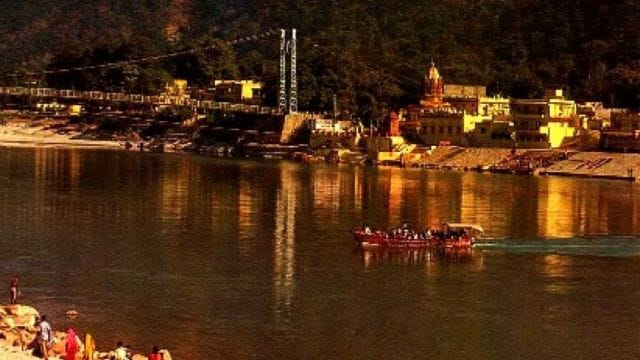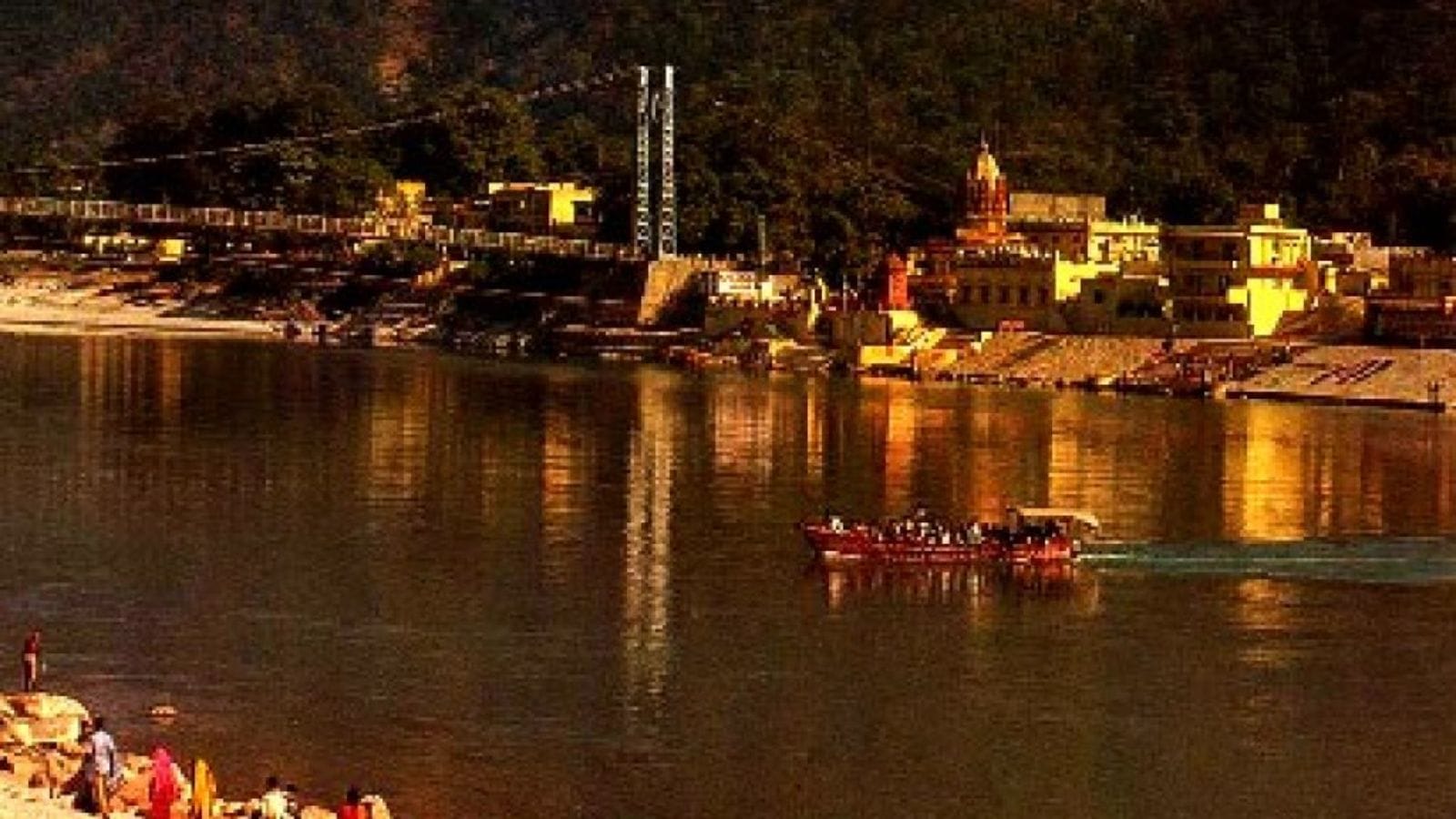

Rahul Pandita
New DelhiFeb 5, 2025 15:52 IST First published on: Feb 5, 2025 at 15:52 IST
About 30 minutes before sunset, the last body is brought to the cremation spot on the banks of the Ganges. As the deceased’s relatives carry him down, a young woman asks a man accompanying her to click her photo. She holds a paper doily of momo in her hands; at the sight of the corpse, her colour fades a bit, but she renews herself quickly, posing in the backdrop of the Janki rope bridge dappled with the last rays of the sun. She takes care to exclude the pyre from her frame.
I am in Rishikesh, and I cannot find a place to sit in the quiet. This is tragic, because for decades, the Ganges attracted ascetics and sundry hermitage seekers like me. There was hope that keeping at bay inner dilemmas of modern civilisation, even if temporarily, would help us renew our connection to the central fount of a higher voice. But with the assault the Himalayas are experiencing, it is more likely that I will find solitude in my gated community in Gurugram than by the Ganges in Rishikesh. Every walkway is filled with people who do not seem to give a moment’s rest to their tongues and stomachs. They make Instagram Reels, even in the middle of the two rope bridges, sometimes stopping the pedestrian movement more than a stray bull. They have absolutely no regard for the sanctity of the place they are in. They are not pilgrims, but people engaging in tourism that the writer Don DeLillo calls “the march of stupidity.”
Story continues below this ad
But the bigger tragedy is how the ecosystem of a spiritual place like Rishikesh has now been programmed to cater to the new demands of the visitor, as if some strange algorithm is at play. From every ghat, loud music is played, blaring through giant sound systems, in a bizarre competition of attracting people. It is so brazen that on several evenings, I tried escaping to the Sivananda Ashram, where the seer Sivananda attained samadhi in 1963 — it is two levels up from the river bank on the highway leading to Srinagar, Garhwal. But the music is so loud that even inside the sanctum sanctorum, it is not possible to find peace in the evening hours. The music arrives as an assault to senses from both sides of the Ganges, and it feels as if one has come to a winter farmhouse wedding party in Delhi.
To who does one approach and say: Bhai, thoda dheema kar deejiye (Brother, please lower the volume). There now is a likelihood of someone among the crowd accusing you of being anti-Hindu, and in the frenzy, anything can happen. It is, of course, another thing that in this mess of senses, the last thing one can think of is Narayana, whose daily japa the young monk at the ashram initiates twice a day. I cannot help but notice that not one of the “tourists” can correctly follow any incantation, even the basic prayer from the Atharva Veda to the gods for well-being. The few westerners, who I see regularly in the ashram, know these scriptures. They — at least the ones who I see meditating in the ashram premises — diligently follow rules and are aware of the sanctity of the place. You will never see them talking next to the board that says “speak softly” or taking pictures where it is clearly prohibited. The Indian families buying jute bags and hippie pajamas and stuffing themselves with street food have no such courtesy.
The Westerner friend who came to Rishikesh in the ’70s and stayed back murmurs that she can no longer recognise the place she chose to live in for the rest of her life. She is careful to weigh her words lest it offends me as an Indian. “There is a greed I see now, which was earlier missing,” she says. And she leaves it there. I know what she means and do not pursue it further. I see it on every path in Rishikesh, people whose faces seem to be shining with this paludism of greed — for nothing in particular, except for “more and that too before everyone else.” This reflects in every gesture — for instance of touching the aarti flame with a fullness of hands.
most read
Story continues below this ad
But then, suddenly, one is crossing the Ram Jhula before sunrise and comes across these small groups of pilgrims from remotest corners of India. For them, geographically, Rishikesh is as alien as Reykjavik. But they know Ganga and they know Ram, and they do not need anything else, at least in that moment. They are nervous, tethered to each other in old-world ways, reminiscent of the time when people would get lost during pilgrimages. They carry small bundles of essentials with them. Shivering in the cold, they hold their cheap muslin saris, simply reciting Sita-Ram on loop, carried on from generation to generation. After the dip and the visit to whichever temple they can go to, they sit by the bank, drying their clothes by tying them with poles, and eating from little plastic bags, containing, among other basic food, puffed rice and pickle. If you could not see a selfie-stick somewhere in the vicinity, you’d think of it as a scene from Rishikesh of the 1950s. Then you also see the balding Himalayas behind them and experience the monstrosity of sound from one of the Ghats and the reverie is broken.
It is these poor pilgrims who must be accorded the rite of passage, in Rishikesh, or in Kumbh. In the new India, where spiritual one-upmanship and political weaponisation of the god is the new norm, they are the real hathyogis.
Rahul Pandita is a Delhi-based writer


